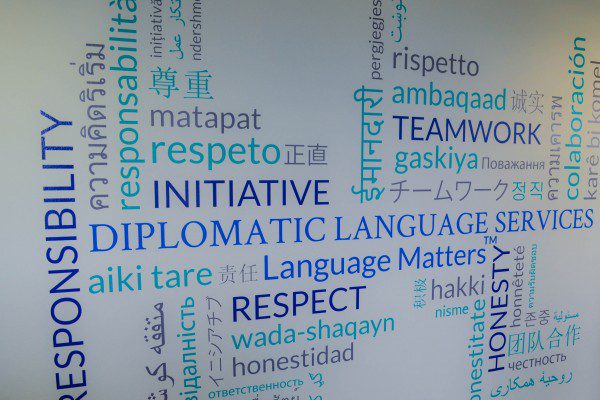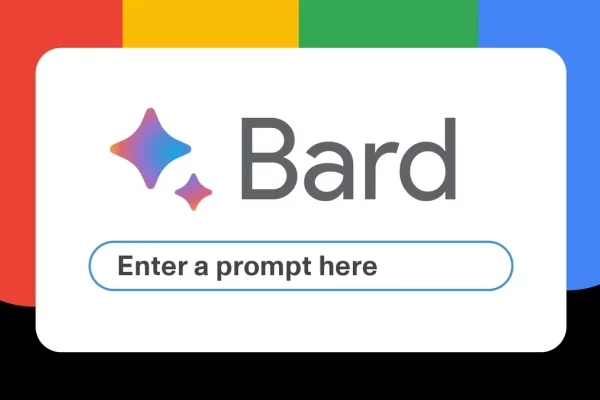Writing documents that use both English and other languages can certainly be tricky. How are you supposed to know what font to use for what language? Have you ever inserted a translation into your document and instead of appearing as text, you have a string of blank boxes or random English characters scattered throughout the foreign text?
This occurs when characters aren’t supported by a font’s code. The programming for many fonts on American products follows the American Standard Code for Information Interchange, which is based on the Latin alphabet. So, if you’re using a language that isn’t based on that alphabet, what font should you use?
Luckily computer programmers have come up with one solution: Unicode. This font programming system assigns a unique code to every symbol from every language, so that way the symbols are recognized when the text switches to different platforms.
For example, the commonly installed font Arial can support almost four thousand characters and the same number of glyphs with its code. In comparison, the Unicode version of this font (Arial Unicode MS) has code that can support 38,917 characters and 50,377 glyphs. Google developed a font called Noto that creates even more characters/glyphs—around 65,000—which allows it to support 93 languages. So…
How do you find Unicode fonts that work for your language? And which fonts are best for new language learners?
It turns out a lot of commonly used standard fonts, like Times New Roman and Arial and Calibri font families, are compatible with many languages, and computers have pre-installed fonts included in their hardware for most languages. You can go into your computer’s language settings and activate that other language, and then tap the alt + shift keys to switch between languages and your keyboard will type the characters associated with those keys.
The advantage of using these pre-installed fonts (as opposed to downloading fonts from online sources) is that you do not have to re-download that font file whenever you switch to a different computer and still want to keep your text in the prescribed font. However, if you will be switching back and forth from a Mac OS to a PC/Windows, the font for your specific language could change depending on which system you’re using and whether that font is on both systems. (For example, Arial is on both systems, but not Lucida Grande.)
Below, I created a list that provides compatible and beginner-friendly fonts for some of the most commonly taught languages at DLS. Some fonts are compatible across multiple languages, and fonts with an asterisk (*) after the title are Unicode fonts, meaning they’re versatile and function on different platforms and systems.
Arabic
Times New Roman* and Arial* are standard, professional fonts used in print and are legible for beginning Arabic learners. Other fonts that come on PCs include Traditional Arabic, Arabic Transparent, Arabic Typesetting, Aldhabi, Andalus, Sakkal Majalla, Segoe UI, Simplified Arabic, and Tahoma.* Other fonts that come on Macs include Al Bayan, Baghdad, DecoType Naskh, Geeza Pro, Geezah, KufiStandard GK, Nadeem, and Arial Unicode MS* (which is on Mac OS X or earlier versions).
Unicode fonts available online include Noto (Kufi Arabic, Naskh Arabic, Sans Arabic), Gentium, Source Sans Pro, Charis SIL, Junicode, FreeSerif, FreeMono, and FreeSans.
Cyrillic/Russian
Most installed fonts for PCs and Macs accommodate Cyrillic text, such as Arial*, Verdana*, Tahoma*, or Palatino* (Mac OS X). Unicode fonts available online include Noto and Titus Unicode (which provides accented vowels).
Devanagari/Hindi
Fonts included on Macs include Devanagari MT/MTS, ITF Devanagari, Kohinoor Devanagari, Shree Devanagari, and Arial Unicode MS* (on Mac OS X or earlier versions). Fonts on PCs include Aparajita, Kokila, Mangal, Nirmala UI, Sanskrit Text, and Utsaah. Unicode fonts available online include Noto (Sans Devanagari, Serif Devanagari), FreeSerif, FreeMono, and FreeSans.
Korean
“한국어,” Malgun Gothic or “Korean,” is a pre-installed font on Microsoft Word; it’s clear and easy to read.
Other fonts on PCs include Batang, BatangChe, Dotum, DotumChe, Gulim, New Gulim*, GulimChe, Gungsuh, and GungsuhChe. Other fonts that come on Macs include Apple Myungjo, Gung Seoche, Hangangche, HeadlineA, Jung Gothic, PC Myungjo, Pilgiche, Seoul, Shin Myungjo Neue, Tae Graphic, and Arial Unicode MS* (on Mac OS X or earlier versions). Unicode fonts available online include Noto (see note on using Noto with CJK languages).
Mandarin
For typing Simplified Chinese characters: SimSun, KaiTi, and FangSong. For typing traditional Chinese characters: PMingLiu and Microsoft JhengHei. Unicode fonts available online include Noto (see note on using Noto with CJK languages).
Pashto, Dari, Farsi/Persian
Standard Dari/Farsi fonts that come on Windows/Microsoft and Mac that are good for Farsi/Dari beginners include all the fonts in the Calibri font family and the Dubai font family, particularly Calibri/Dubai Light because the letters are easier to distinguish from each other. Standard fonts used for headlines or titles include Tahoma and Simplified Arabic, though these are harder for beginners to read. To type from right to left, select the “right-align” option in a Microsoft program. A preferred font for script-like, calligraphic Dari and Farsi is Nastaliq. It’s standard for calligraphic or poetic writing but beginner students will have trouble deciphering the individual letters in this font. Level 2+ students should be exposed to this font.
Alefba has fonts for Arabic, Persian (Farsi), Dari, Urdu, Pastho, and Kurdish (Sorani).
German and Romantic Languages
Click this link to see keyboard combinations for typing characters or accents in French, German, Italian, Portuguese, or Spanish.
Somali
Noto is Unicode font available online (Osmanya script, Arabic fonts).
Thai
Angsana New font is easy to read for beginners, and Browalia New is a classic Thai font. Noto is an online font compatible with Thai. For a Thai transliteration keyboard on Chrome and Google Drive/Gmail, click here.
Turkish
Most installed fonts on Macs and PCs accommodate Turkish text, such as Arial,* Verdana,* Tahoma,* or Palatino* (Mac OS X). Noto is a compatible Unicode font available online.
Urdu
Jameel Noori Nastaleeq is a good font to use that can be downloaded from UrduJahan or Lipikaar. Noto is another Unicode font available online.
Vietnamese
Compatible fonts that come on PCs and Macs include Arial,* Times New Roman,* Courier New,* and Arial Unicode MS* (which is on Mac OS X or earlier versions). Noto is a Unicode font available online. To see several different methods for typing Vietnamese (VNI, Telex, VIQR), see DuoLingo’s site.
For more DLS, check out other blogs and visit us on Facebook, LinkedIn, Instagram, or Twitter!
By Stephanie Fudge




